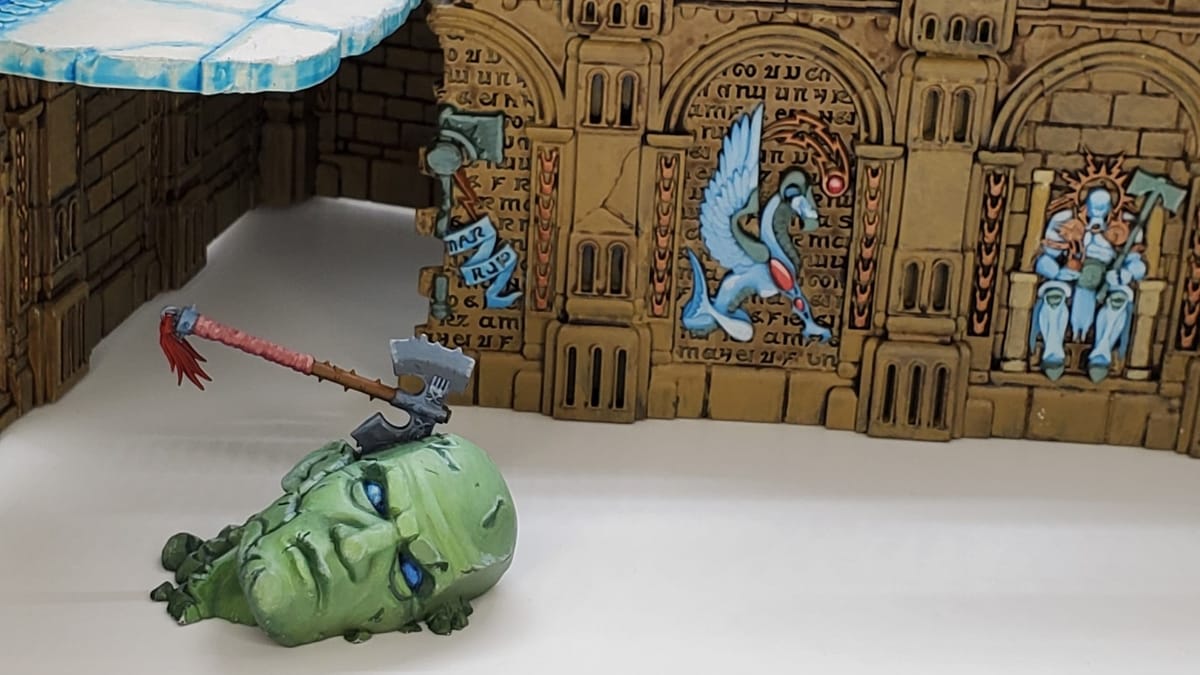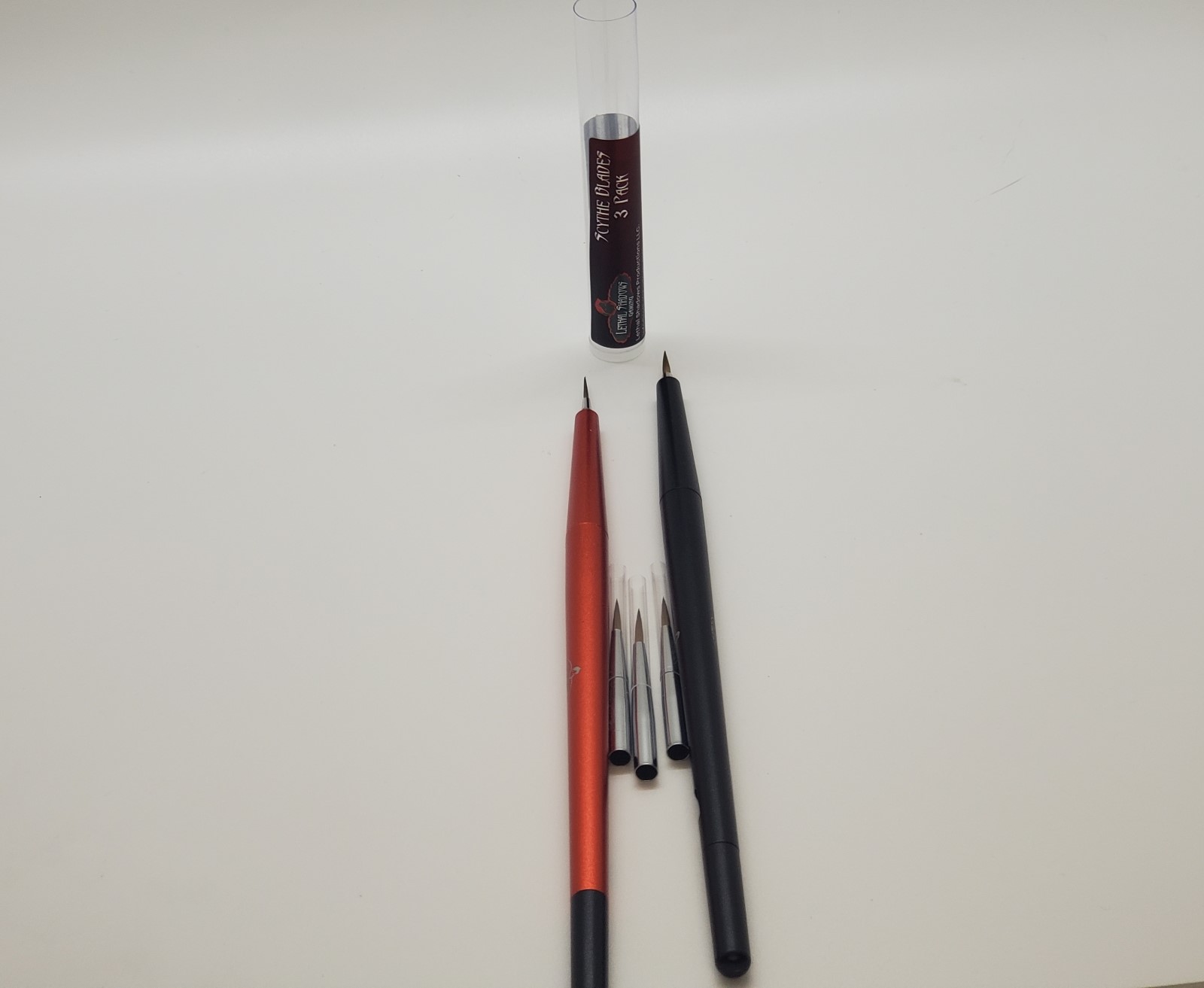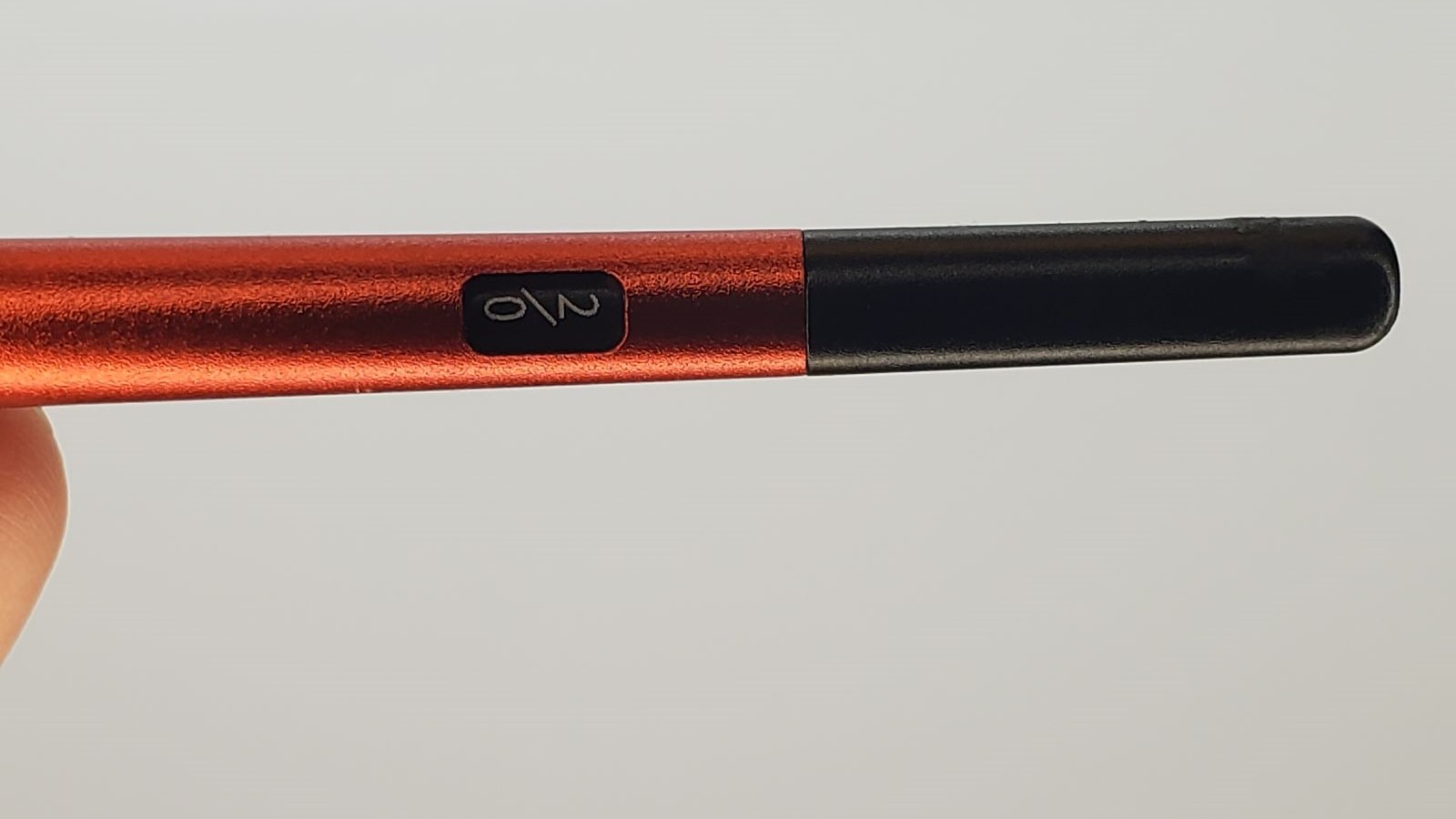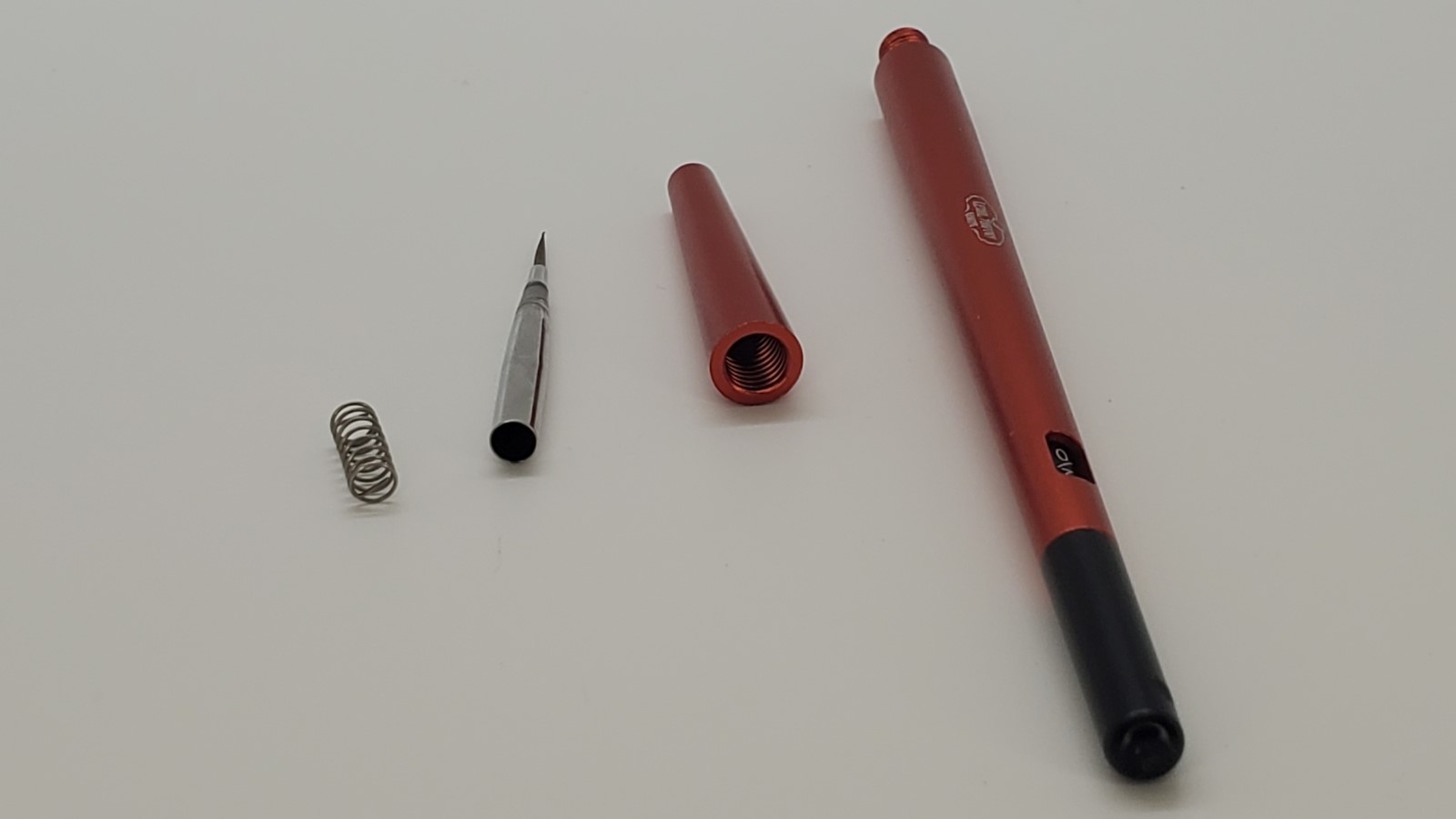
Product not provided by manufacturer.
Given climate change, every aspect of society is looking for ways to keep its pastimes while practicing a little more awareness about our carbon footprint. Regarding painting and painting of little plastic men, it may be impossible to discard petroleum products entirely (until metal sculpts or wooden minis are in vogue again), but mountains of throwaway $2 Taklon brushes always seemed like an avoidable excess. So when I heard about the “Paint Scythe,” a brush with detachable heads, I immediately sought it out.
I’m convinced that some version of a reusable brush is the future, but does Lethal Shadows deliver it? My answer’s a firm “mostly.” A few hiccups marred the thirty-odd hours I spent with it. Still, I’m never returning to Taklons or Hobby Lobby’s bulk value packs.

For a start, the money math checks out. The biggest part of the investment, the metal brush body, costs $20. The heads themselves cost $10 and come in packs of three. $3 per head puts it a few cents above the cheapest options on the market, but the quality on display justifies it. The tips are supple and don’t fray easily. They conform to the “rigger” form—a skinny brush belly and small tip—best suited to this hobby.
Actually, if anyone wants to try out a mass market brush of this type without the front-end investment, I suggest that they buy a size 1 Winsor & Newton Cotman. That will set you back a little under $5 and the Paint Scythe’s a wiser overall investment, but it’s better to be safe than sorry.
The Scythe itself is hefty without crossing over into cumbersome, and it sits in the hand like a good fountain pen. Although I’d welcome a rubber grip, the aluminum body is somewhat porous and provides sufficient traction. It’s far better than the typical handle (or the Cotman’s, for that matter). Some of its details deserve retooling, and I suspect a Scythe 2.0 will hit the market in a year or so. An adjustable “brush-o-meter” at the Scythe’s rear end tracks the current tip you’re using, and that’s because the heads themselves bear no markings. An experienced painter (I sometimes fool myself into believing that I qualify) can tell the difference between a three round and a four; most can’t.

Even if they can, those are valuable seconds wasted by simply forgetting to update the meter. That’s a loss of valuable creative flow. I chose to solve this problem by keeping the heads in their labeled tubes until absolutely necessary, but I benefit from an ample workspace which can accommodate some clutter. Theoretically, saving space should be a great perk of owning a Paint Scythe, so why not engrave a few numbers and make it more user friendly?
I suspect that’s because the Scythe’s adapting to production models and materials already in place, not inventing new ones. The heads are straight from a typical factory line: they don’t attach directly to the brush. Instead, they slot into a funnel which screws into the handle. A loose spring props them up, so unscrewing the funnel to change the brush means the spring will try to make a break for it. A shag carpet can bury an errant little spring like that.
By the way, Lethal Shadows sells packs of replacement springs. How do I know? Oh, no reason.

Furthermore, the choice of heads is currently small, and I mean that in terms of both selection and size. Lethal Shadows offers triple zeros to ones, and I wish they’d aimed for breadth rather than sequence here. A size three or four paired with a size one tend to be, based on my teaching experience, the workhorses of most beginners. They’re not perfect for everything, but they can substitute for a higher or lower size in a pinch. For volume, they’re crucial. The most common mistake I see in starting miniature painters is a strange attachment to tiny, tiny brushes.
I can’t, therefore, recommend the Paint Scythe to a batch painter or someone who sticks to speedpaints. Once the line develops further, that may change. Then again, it might not. Frankly, using a Cotman to apply speedpaints wastes quality on something designed to ignore it.
Other painters, however, should seize the bargain of a Cotman-level brush for a buck less. Using your wallet to vote for a more eco-conscious option just makes the savings that much sweeter.
Great
Ideally, everyone should buy kolinsky sable kits and treat them with the reverence a samurai gives their sword. My $100 Artis Opus brushes will last me a decade because, at that price and with that pedigree, they’d better. But even if someone has the money and inclination for that step, inks, metallics, and speedpaints mean that we’ll always need a good disposable brush. Lethal Shadows’ Paint Scythe is not only the most responsible option, but the best, most convenient one. That sort of decision rarely comes along.
Pros
- Economical
- Higher-end synthetic tips
- Environmentally friendly
Cons
- Limited selection (for now)
- Sizes not printed on heads
